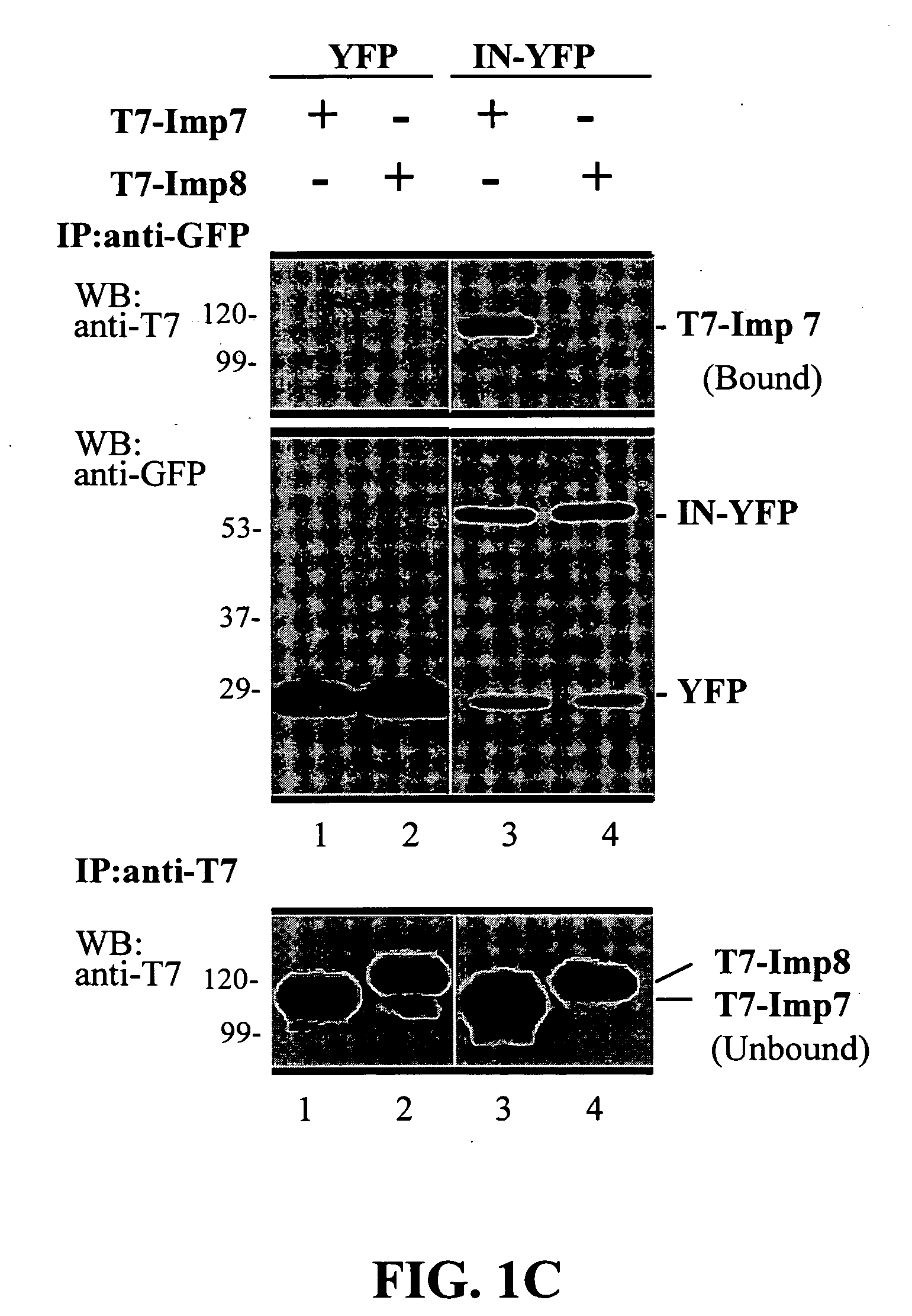Integrase-dirived HIV-inhibiting agents
a technology of integrase and inhibitor, which is applied in the field of agents based on integrase of hiv1, can solve the problems that the imp alone is not enough to sustain significant rtc, and achieve the effect of reducing the binding level
- Summary
- Abstract
- Description
- Claims
- Application Information
AI Technical Summary
Benefits of technology
Problems solved by technology
Method used
Image
Examples
Embodiment Construction
[0100]The invention has to do with using the C-terminal domain of HIV-1 integrase, and certain peptides derived from specific regions of this domain, for inhibiting HIV-1 infection. Without being limited by mechanism, the invention is based on the finding that these regions of the IN C-terminal domain interact directly with the nuclear import machinery of the host cell, specifically with imp7 and impβ, and that these IN regions are necessary for translocating the HIV-1 nucleoprotein pre-integration complex (PIC) into the nucleus. Thus these IN regions are important for establishing HIV replication and subsequent infection.
[0101]The experiments carried out herein make use of certain specific materials and techniques. These are set forth below solely for verifying the experimental findings and should not limit the scope of the invention.
[0102](1) Construction of different IN expressors and HIV-1 RT / IN defective provirus: The full-length wild-type HIV-1 IN cDNA was amplified by polymer...
PUM
| Property | Measurement | Unit |
|---|---|---|
| pH | aaaaa | aaaaa |
| molecular mass | aaaaa | aaaaa |
| molecular mass | aaaaa | aaaaa |
Abstract
Description
Claims
Application Information
 Login to View More
Login to View More - R&D
- Intellectual Property
- Life Sciences
- Materials
- Tech Scout
- Unparalleled Data Quality
- Higher Quality Content
- 60% Fewer Hallucinations
Browse by: Latest US Patents, China's latest patents, Technical Efficacy Thesaurus, Application Domain, Technology Topic, Popular Technical Reports.
© 2025 PatSnap. All rights reserved.Legal|Privacy policy|Modern Slavery Act Transparency Statement|Sitemap|About US| Contact US: help@patsnap.com



